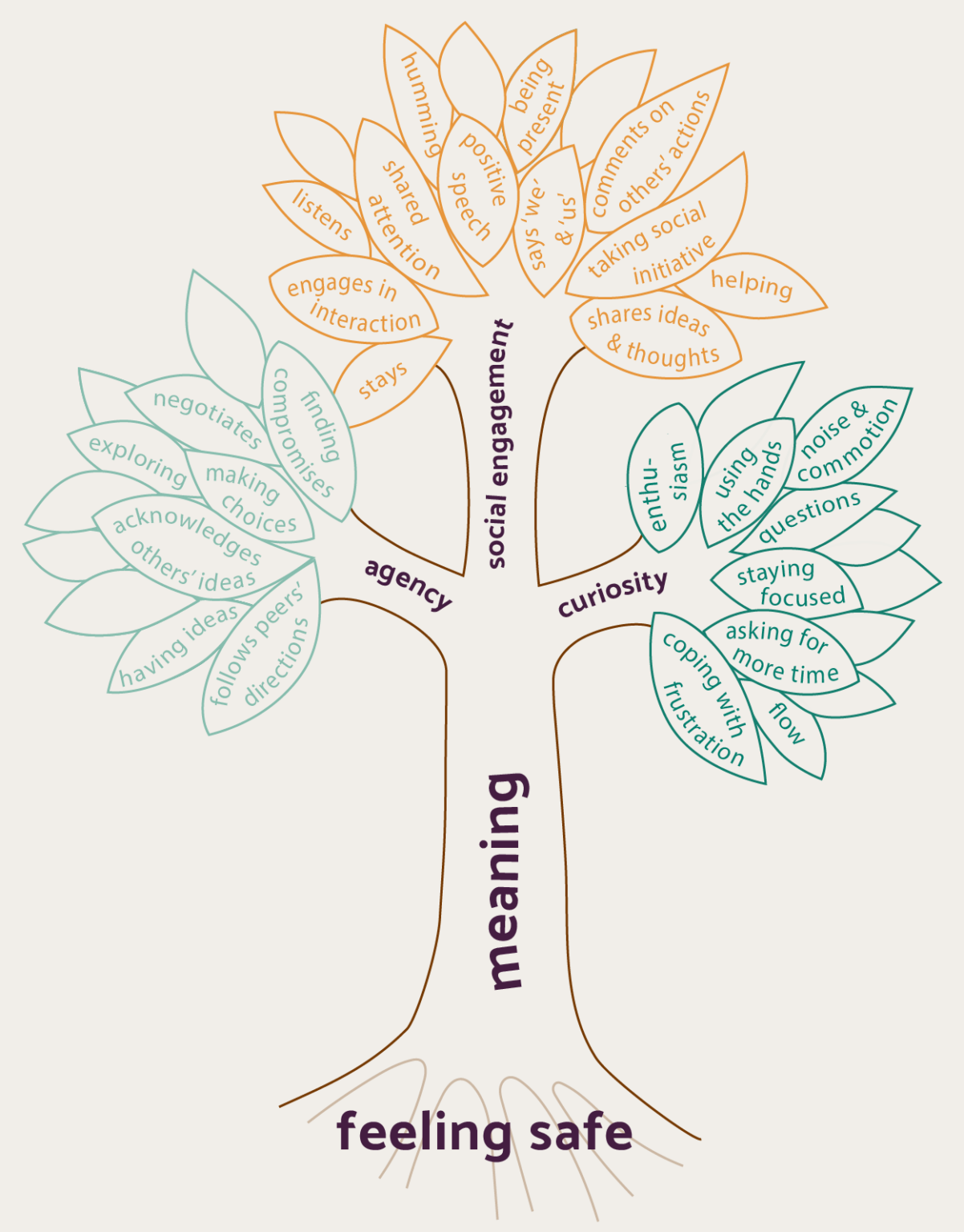Indicators for Playful Learning
Indicators for playful learning give us a common language to talk about and get a common understanding of playful learning environments.
The indicators are different from school to school because the culture of each school determines how we create our learning environment. For instance, the indicator tree to the right is developed with Langagerskolen to describe their understanding of a playful learning environment.
The indicators often consist of three overall concepts which together characterize playful learning, e.g., agency, engagement, and curiosity. Each indicator is outlined with concrete suggestions for how playful learning can look and feel like. The indicators can therefore be used to investigate and assess when the learning at the individual school is playful.
The indicators give us the opportunity to speak the same language and create a playful learning culture across the school. When each school identifies their indicators for playful learning, they create a common language and mindset on how to plan, interpret, observe, and document the learning. This supports a playful school culture that is both motivating and inclusive for all the children.
